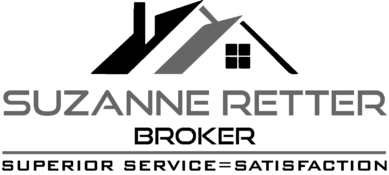This information can help you use wood safely as an emergency heating fuel.
As most home heating systems need electricity to work, loss of power creates a heating emergency. Many householders use their wood burning stoves and fireplaces to heat their homes during a power outage.
A properly installed and operated wood stove or heating fireplace can be a safe and secure way to heat a home. But using wet wood, a makeshift, temporary wood stove installation or continuous use of a decorative fireplaces increases the risk of a house fire. If possible, get professional help from a qualified chimney installer, a chimney sweep or ask your local fire department for advice.
Getting the Best Out of Wet Wood
You may be forced to use wet wood. It is hard to light, slow to burn and provides much less heat than dry wood.
Here’s how to make the best of an emergency situation.
- Because small pieces heat up and catch fire faster than large pieces, split the wood into pieces about 75 mm (3 in.) in diameter.
- Brush snow and ice off the wood and bring it into the house – making sure you don’t store it too close to the stove.
- Burn small, bright fires, using no more than five small sticks at a time.
- If you have some dry wood, mix it with the wet wood.
- Never load up the stove or fireplace and let it smoulder.
Safety tips
- If you have a battery-operated smoke detector, make sure that it works. If you don’t have one, try to install one. A batteryoperated carbon monoxide alarm is also useful.
- Check materials around the stove or fireplace and all exposed parts of the chimney, including the attic, for signs of overheating.Wood starts to darken as it overheats.
- Make sure all flue pipe joints are fastened with no fewer than three sheet metal screws.
- Burn small, bright fires to make the most effective use of the fuel, while avoiding the overheating from large, intense fires.
- Don’t try to heat the whole house; concentrate all your activities in the room where the heater is and let other rooms go cold; drain your water pipes and pumps.
- Shovel ashes into a metal container, take it outside immediately and empty it in the yard away from trees and shrubs; never put a bucket full of ashes in the basement or on a wooden porch floor, and never put ashes in a wood or cardboard box.
- If the stove continues to smoke, open a nearby window.
- If you can’t keep the unit from smoking, stop using it because you and your family could suffer carbon monoxide poisoning.
- If you are using a wood burning furnace, remove the blower compartment door and open the basement door; burn small, controlled fires.
Temporary Wood Stove Installations can be Hazardous
The most dangerous wood stove installations are makeshift installations by untrained people. Installing a wood stove may seem simple. It isn’t. A safe installation calls for a lot of specialized knowledge.
A wood stove must have a proper brick or metal chimney – never try to vent a wood stove out a window using single-wall flue pipes. Make sure the inside of the chimney flue is clear and smooth.
The flue pipes that connect the stove to the chimney are often the weak link. Every joint in the flue pipe assembly must be fastened with three sheet metal screws to prevent it from falling down as it heats. Flue pipes must be at least 450 mm (18 in.) away from combustible materials like wood furniture and drywall. The stove should be at least 125 cm (48 in.) away from combustible materials.
Most Important, Get Professional Help
In Quebec, hire a chimney sweep licensed or accredited by the Association des professionnels du chauffage (APC).
In other provinces, hire an installer or chimney sweep with a Wood Energy Technical Training (WETT) certificate.
Or have your local fire department check your installation.
Look in the Yellow PagesTM for wood stove sellers and chimney sweeps nearest you, or call the numbers at the end of this message to get more information. If you cannot get professional help, don’t take any chances. It is better to leave your home than risk your family’s safety.
Be Careful with Decorative Fireplaces
Fireplaces in most houses are designed for watching a fire, not for serious heating. Continuously using a decorative fireplace can be dangerous, particularly if large fires are burned, as the wood in adjacent walls may reach unsafe temperatures. Since decorative fireplaces do not capture much of the fire’s heat, it is usually better to leave the glass doors open to gain the direct radiant heat from the fire. The tempered glass in many of these fireplaces block this direct radiation.
To help avoid smoke spillage, burn one sheet of newspaper first to preheat the chimney. Build a small, brightly flaming fire to gain the most direct radiation, without overheating the fireplace structure. To reduce the amount of warm air drawn out of the house into the fireplace, close the throat damper until the unit begins to spill smoke, then open it until the smoke stops. Never leave the unit unattended.
Put your Well Being First
Use your stove or fireplace safely. Don’t risk your family’s safety trying to save your water pipes. Move to a warm shelter until you can provide adequate heat.
For further information, please contact:
The Hearth Patio, and Barbecue Association of Canada
705-788-2221
L’association des professionnels du chauffage
514-270-4944
Wood Energy Technology Inc.
1-888-358-9388
For more information about wood heating, Natural Resources Canada has produced a booklet entitled A Guide to Residential Wood Heating. Free copies may be obtained from:
Energy Publications
Office of Energy Efficiency
c/o Canada Communication Group
Ottawa ON
K1A 0S9
Toll-free 1-800-387-2000
Fax: 819-994-1498

